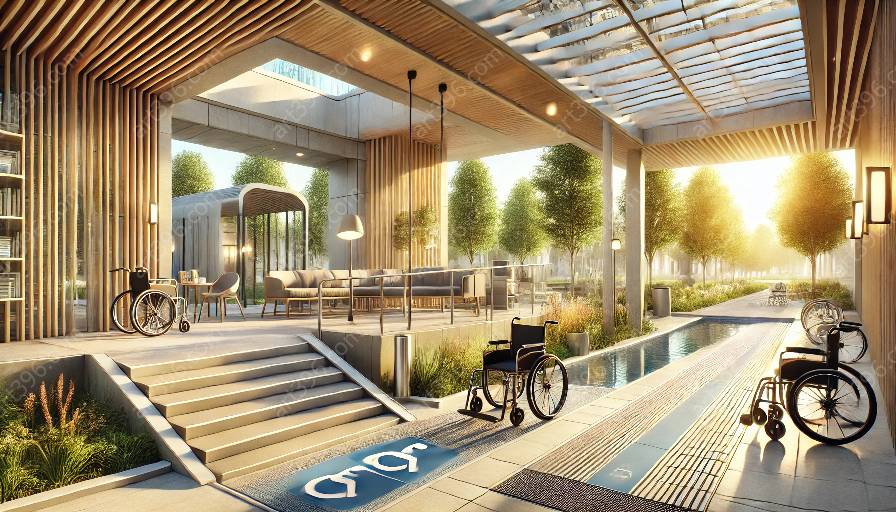Accessible design plays a crucial role in shaping inclusive and sustainable communities. Its economic impact and compatibility with accessible architecture and general architectural practices are significant factors in driving positive change. This topic cluster will delve into the economic implications of accessible design, its influence on accessible architecture, and its broader impact on the field of architecture.
Understanding Accessible Design
Accessible design refers to the process of creating environments, products, or services that can be accessed, understood, and used by all individuals, regardless of their physical abilities or disabilities. In the context of architecture, it involves designing spaces that are easy to navigate and use for people with disabilities, the elderly, and individuals with limited mobility. Accessible design is not only a matter of compliance with regulations, but also a fundamental principle of creating inclusive and welcoming spaces for everyone.
Benefits of Accessible Design
The economic impact of accessible design is multifaceted and extends beyond financial considerations. Accessible design has the potential to unlock new opportunities and drive positive change in various aspects of society.
- Social Inclusion: By creating environments that are accessible to all, accessible design fosters social inclusion and promotes diversity. It allows individuals with disabilities to participate more actively in various activities and contribute to the economy.
- Market Growth: Businesses that embrace accessible design can tap into a larger consumer market. By offering products and services that are inclusive and accessible, companies can gain a competitive edge and attract a broader customer base.
- Cost Savings: Investing in accessible design from the outset can result in long-term cost savings. By integrating accessibility features during the design and construction phases, the need for costly retrofits and modifications in the future can be minimized.
- Health and Well-being: Accessible design contributes to the well-being of individuals, including those with disabilities. By providing access to amenities, public spaces, and transportation, accessible design promotes physical, mental, and emotional well-being for all members of the community.
Accessible Architecture and Economic Development
Accessible architecture, as a specialized field within the broader scope of architecture, focuses on creating environments that are universally accessible and usable. The synergy between accessible architecture and economic development is notable in various respects.
First, accessible architecture contributes to the development of infrastructure that caters to the needs of all individuals. This, in turn, enhances the overall quality of life in communities and fosters economic prosperity. By creating accessible public spaces, buildings, and transportation systems, accessible architecture supports the mobility and participation of individuals with disabilities and promotes a more inclusive society.
Furthermore, accessible architecture presents opportunities for innovation and market differentiation. Designing spaces and structures that are universally accessible can set architectural firms and construction companies apart, leading to new business prospects and partnerships. This can also drive innovation in material selection, construction techniques, and technological solutions, thereby contributing to economic growth and advancement within the architectural industry.
Accessible Design and Sustainable Development
Another significant aspect of the economic impact of accessible design relates to its alignment with sustainable development goals. Accessible design contributes to the creation of sustainable communities by promoting social equity, resource efficiency, and long-term resilience.
From an economic standpoint, sustainable design practices, including accessible design, can result in long-term cost savings and improved resource management. By incorporating accessibility features that reduce energy consumption, optimize space utilization, and minimize waste, accessible design aligns with the principles of sustainable development while offering economic benefits to stakeholders and communities.
Conclusion
The economic impact of accessible design is far-reaching and significant. Its compatibility with accessible architecture and general architectural practices underscores its potential to drive positive change and foster inclusive, sustainable communities. By recognizing the economic value of accessible design and embracing its principles, stakeholders in the architectural, construction, and urban planning fields can contribute to a more inclusive, prosperous, and resilient society.

















































































